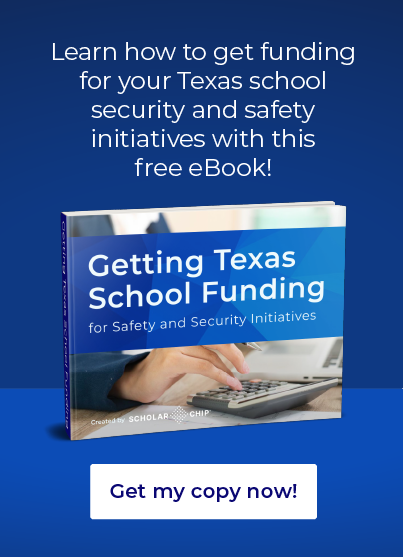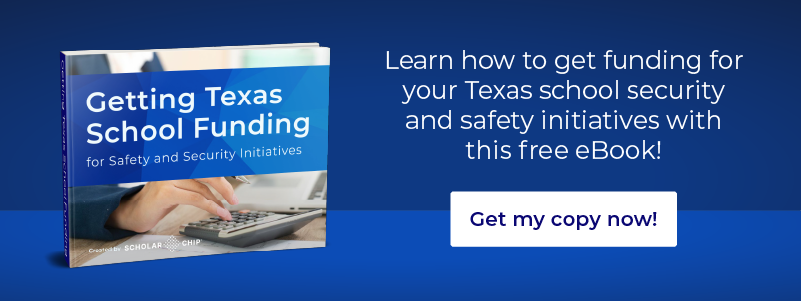With school funding in Texas as tight as ever, it can seem impossible to implement new school security measures. But every student and educator’s mind remains aware of the potential for violence in their school. That’s why it’s crucial to have a strategic emergency response plan in place. It’s also critical to drill through this plan to ensure that everyone on campus knows what to do when the unimaginable happens.
A robust violence prevention program is even more important than a good response plan. Unfortunately, there isn’t one straightforward tool or program that will solve this issue for every school. Many strategies must be employed simultaneously at varying levels to prevent school violence. Students, teachers, and leadership must share the responsibility for promoting school safety and security. Here’s how to make it happen, even with the current state of school funding in Texas.
Tips to Involve Students in School Safety
Students should be involved in improving campus safety and security. After all, they are the largest group of people that are impacted by any policy change. When they are included in the planning process, it’s easier to get their buy-in. Also, with students in the room during such sessions, they may share valuable insights that teachers and administrators would never come up with on their own. Here are a few ways to get students involved in improving school safety:
1. Set realistic expectations for student behavior. Please note that this does not mean you should stop trying to combat certain pervasive behaviors. Instead, decide what you absolutely will not tolerate, and make sure all staff understand the policy so they can enforce it consistently.
2. Establish equally reasonable punishments for students who fail to meet those expectations.
3. Help students be responsible parties in creating a positive school climate. Consider establishing a student advisory board to get interested students involved in brainstorming ways to improve communication and boost positivity.
4. Talk to students about peer pressure. Encourage students to engage in positive pressure rather than negative.
5. Create an anonymous reporting system so students feel safe telling an adult about disturbing acts, conversations, or observances.
The Teacher’s Role in Preventing On-Campus Violence
Because teachers spend so much time each day with students, they inevitably play a significant role in preventing violence. Here are simple, actionable recommendations for how teachers can help prevent school violence:
1. Encourage teachers to show students they care—beyond the classroom. Ask teachers to attend after-school events, such as school sports games, recitals, and concerts. Also, there is always a need for teachers to run extracurricular clubs and programs. When students feel like their teachers care about them, they are more likely to open up about the stressors in their life, rather than act out on feelings of anger or frustration.
2. Tell teachers that the best policy is to stop inappropriate discussions in class immediately; this may include bullying a peer, racist chat, stereotyping, and other topics.
3. Many teachers naturally observe students for warning signs that they may act out. Those signs may include depression, mood swings, anger issues, distancing themselves from friends, or an obsession with violence or death. It’s worth reviewing the importance of good student observation in staff meetings.
4. Train teachers to be peacemakers. When students disagree with each other, the teacher should seize the opportunity to teach them the skills to resolve their conflict peacefully.
5. Teachers should maintain open lines of communication with all parents, from the start of school. This way, should a concern arise about a student, it will be that much easier for the teacher to reach out to the parents of a potentially at-risk student.
How School Leadership Can Help Prevent Violence
When it comes to rules, policies, and punishments, it all starts at the top. School leadership must show a strong charge toward making any improvements on campus. Psychology Today has helpful tips to end school violence that any school leaders can implement:
1. Identify students at risk of violence issues and intervene immediately.
2. Schools need to provide those students with a framework by which they learn empathy, emotional control, and conflict resolution skills.
3. School leaders must foster an environment where positive communication, respect, and responsibility for each other are stressed.
Introducing ScholarChip-ABE
The ScholarChip Alternative Behavior Educator is the tool that school leaders need to connect teachers, counselors, and parents who are vested in turning around an at-risk student. With centralized communications, reporting, and lessons tailored to each student, as well as its ability to integrate with PowerSchool, there’s no better early intervention tool available. With school funding in Texas presenting challenges to districts everywhere, ScholarChip-ABE could be the simple solution that your district needs to properly help at-risk students.
Are you ready to get serious about preventing school violence? Contact ScholarChip to learn more about how you can use the Alternative Behavior Educator at your campus.
To learn how ScholarChip can help make Texas schools safer or get free recommendations, feel free to chat with one of our specialists today!


